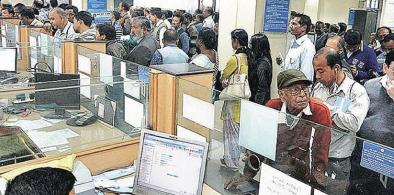S&P affirms India's sovereign ratings at 'BBB-', outlook stable
Global rating agency S&P affirmed India's unsolicited foreign and local currency sovereign ratings with a stable long-term outlook

Global rating agency S&P affirmed India's unsolicited foreign and local currency sovereign ratings with a stable long-term outlook.
Consequently, the ratings were affirmed to 'BBB-' long-term and 'A-3' short-term unsolicited foreign and local currency sovereign ratings.
"India's worsening Covid-19 situation, along with strict measures, aimed at containing spread of the pandemic, have hit the economy hard. Productive capacity has been severely disrupted since the start of the pandemic. We foresee a permanent loss of approximately 13 per cent of output compared with India's pre-pandemic trend," the rating agency said in a statement.
"While India's economy continues to outperform peers at a similar level of income on a 10-year weighted average real GDP per capita basis, its performance on this metric has weakened somewhat."
As per the agency, prior to the onset of the Covid-19 pandemic, the Indian economy had already slowed measurably.
"Existing vulnerabilities, including a weakened financial sector, rigid labour markets, and weak private investment, could hamper the economic recovery, especially in view of the deeper downturn this year than we expected," the statement said.
"Although India's banking sector has ample liquidity, lending conditions remain tight, with limited risk appetite. Credit extension to less creditworthy borrowers in the non-bank financial institution (NBFI) space may be weak for some time owing to heightened prudence in banks' lending standards."
According to the statement, government measures aimed at backstopping NBFI debt should help alleviate these conditions to some extent.
"Liquidity risks are more prevalent in some parts of the NBFI sector, especially for firms in the automobile, small and midsize enterprise (SME), and microfinance segments," the statement said.
In terms of outlook, the agency expects India's economic activity to begin to normalise in fiscal 2022, resulting in real GDP growth of about 10 per cent.
"A significant proportion of this rebound will be due to the very weak base in the current fiscal year. The Indian economy's long-term outperformance highlights its historical resilience," the agency said.
"The country's wide range of structural trends, including healthy demographics and competitive unit labour costs, work in its favour. These strengths will be challenged by the spread of the pandemic, financial and corporate weakness, and a prolonged decline in investments."
The agency pointed out that the government's reluctance to provide greater direct fiscal support to the economy likely reflects pre-existing fiscal constraints owing to years of high fiscal deficits.
Although, it said that additional stimulus may help to avert a steeper downturn this year, it would also further strain the government's weak finances.
"This increasingly tenuous balance may challenge India's capacity to maintain sustainable public finances and balanced economic growth, if the recovery is slower than we anticipate."
"Direct government expenditure under India's stimulus programme is limited, at about 1.2 per cent of GDP, so far. This compares to direct spending of roughly 3 per cent of GDP on average in other emerging markets. The Indian government continues to lean heavily on guarantees as well as on the banking sector and the RBI to support the economy and the financial sector."
It added: "We believe the stimulus measures will help to support hardest-hit individuals, MSMEs, and NBFIs, and contain the immediate fallout in the broader financial sector. However, the near-term fiscal impulse to the economy is limited, and some damage to the real economy from India's deep economic downturn this year could be enduring."
(IANS)











Post a Comment